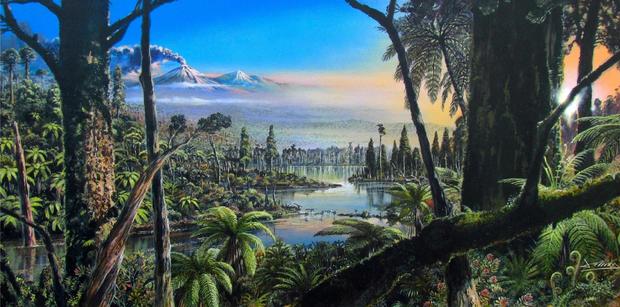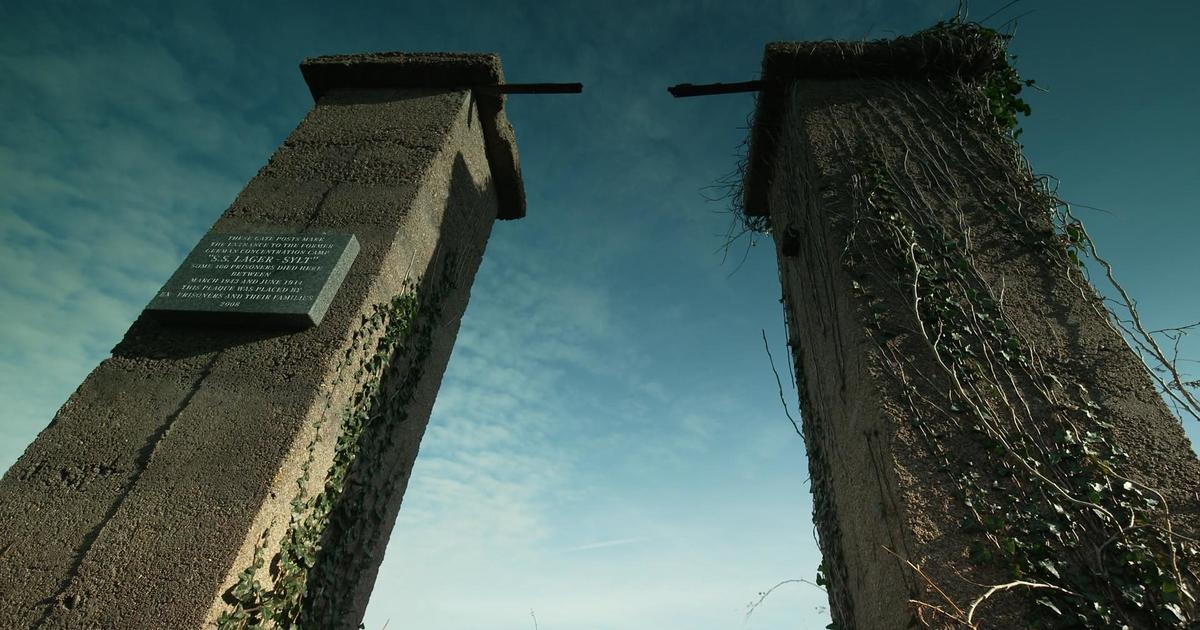Remains of a 90-million-year-old rainforest discovered beneath Antarctic ice, study says
The South Pole is surrounded by a harsh, frozen landscape of year-round ice and snow — but it hasn't always been this way, according to new research published Wednesday in the journal Nature. A group of researchers found evidence that approximately 90 million years ago, Antarctica was home to an ancient, swampy rainforest full of diverse animal and plant life.
The group discovered a surprisingly well-preserved network of roots in a sediment core collected near Pine Island Glacier. When the researchers found the core, they were immediately shocked by its appearance.
"During the initial shipboard assessments, the unusual coloration of the sediment layer quickly caught our attention. It clearly differed from the layers above it," lead author Dr. Johann Klages, a geologist at the Alfred Wegener Institute Helmholtz Centre for Polar and Marine Research in Germany, said in a press release.
Following a CT-scan, researchers said the soil was so well-preserved that it still contained traces of pollen, spores and remnants of flowering plants. Even intact individual cell structures could be observed.
"It was particularly fascinating to see the well-preserved diverse fossil pollen and other plant remains in a sediment deposited some 90 million years ago, near the South Pole," co-author Professor Ulrich Salzmann, a paleoecologist at Northumbria University, said in the press release.
Salzmann said the plant remains suggest that the coast of West Antarctica once contained a dense, swampy rainforest with many conifers and tree ferns. He compared the ancient forest, which existed during the warmest period of the last 140 million years, to ones found in New Zealand today.
During the cretaceous period, when dinosaurs dominated the planet, global temperatures were much higher than they are today, as were sea levels. Tropical sea temperatures were thought to be as high as 95 degrees Fahrenheit, but little was known about conditions near the South Pole.
After studying the soil, researchers found evidence of heavy rain, an annual average air temperature of about 54 degrees Fahrenheit and an average summer temperature of 66 degrees Fahrenheit. The temperatures of rivers and swamps reached up to 68 degrees Fahrenheit — even though the region experienced no sunlight for one-third of the year.
Researchers said that these conditions would only be possible with dense vegetation and a lack of major ice sheets in the region. Additionally, the new findings suggest that carbon dioxide levels in the atmosphere were higher during that time period than scientists had previously thought, as were global temperatures.
"Before our study, the general assumption was that the global carbon dioxide concentration in the Cretaceous was roughly 1000 ppm. But in our model-based experiments, it took concentration levels of 1120 to 1680 ppm to reach the average temperatures back then in the Antarctic," said co-author Professor Gerrit Lohmann, from Germany's Alfred Wegener Institute.
One big question remains: If Antarctica used to be so warm, what caused it to dramatically cool, allowing the formation of ice sheets? According to co-author and AWI climate modeler Dr. Gerrit Lohmann, in all of their climate simulations, researchers were "unable to find a satisfactory answer."





